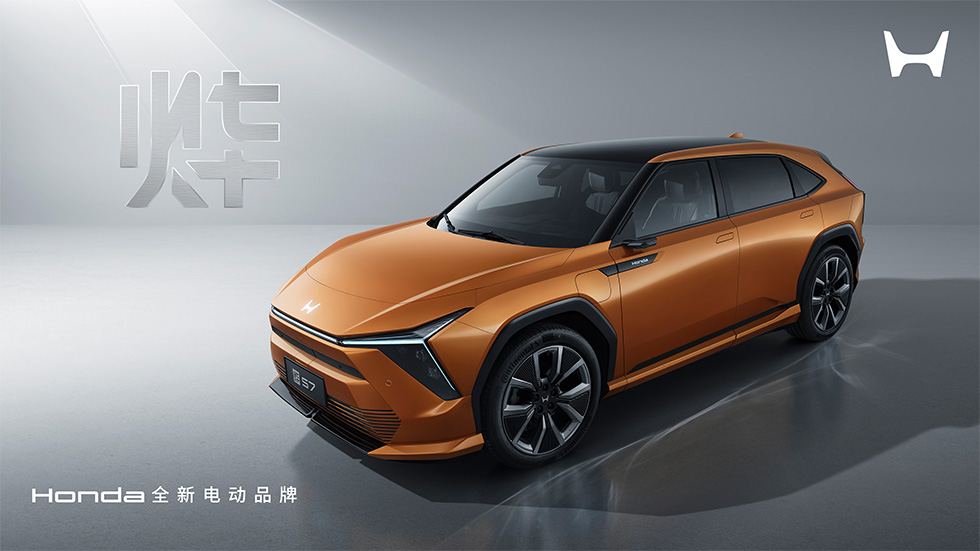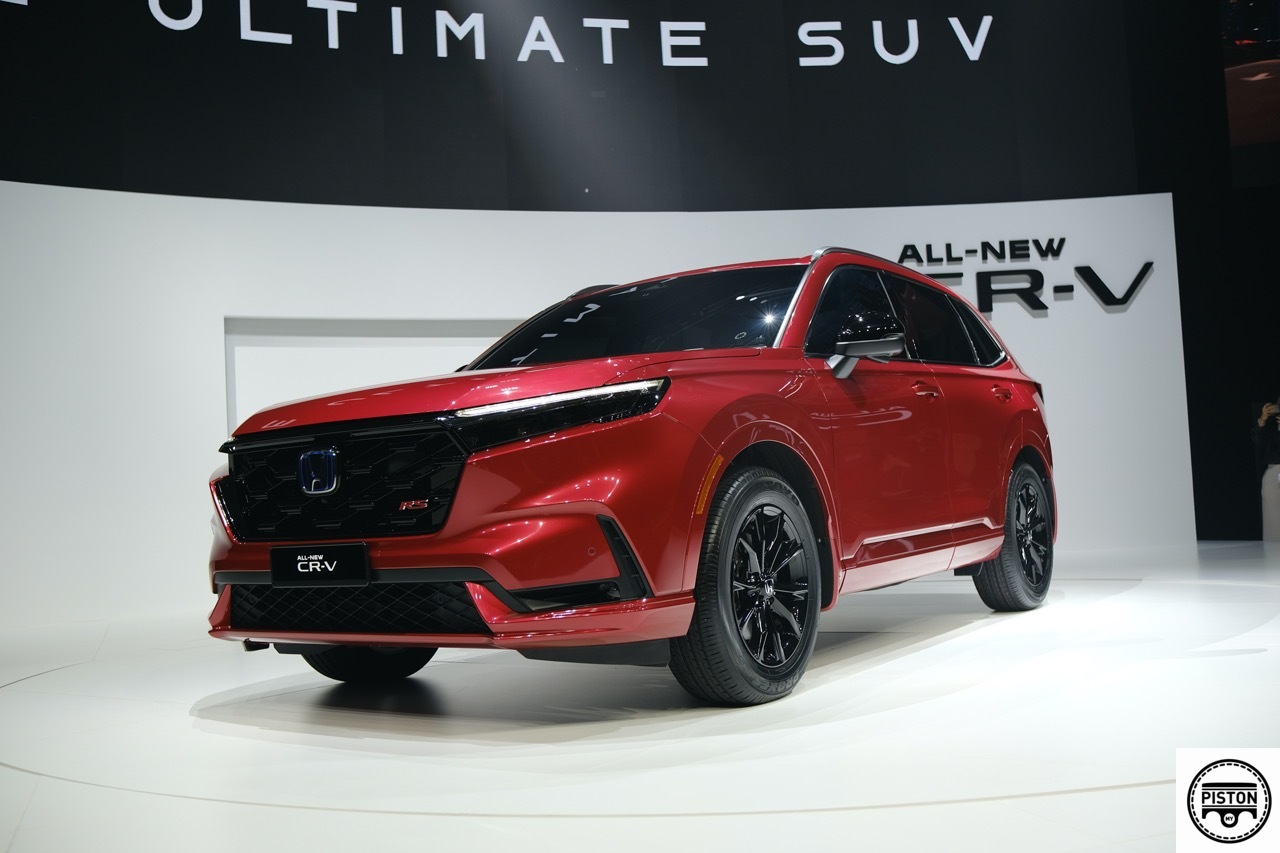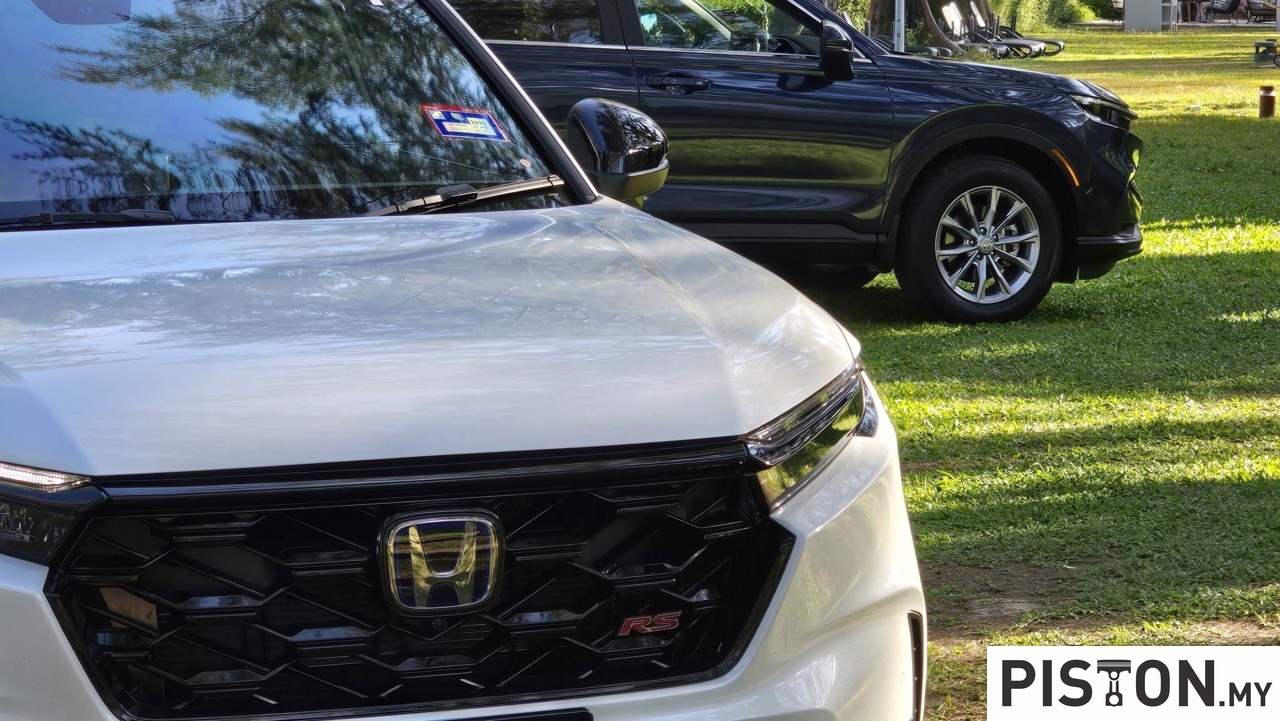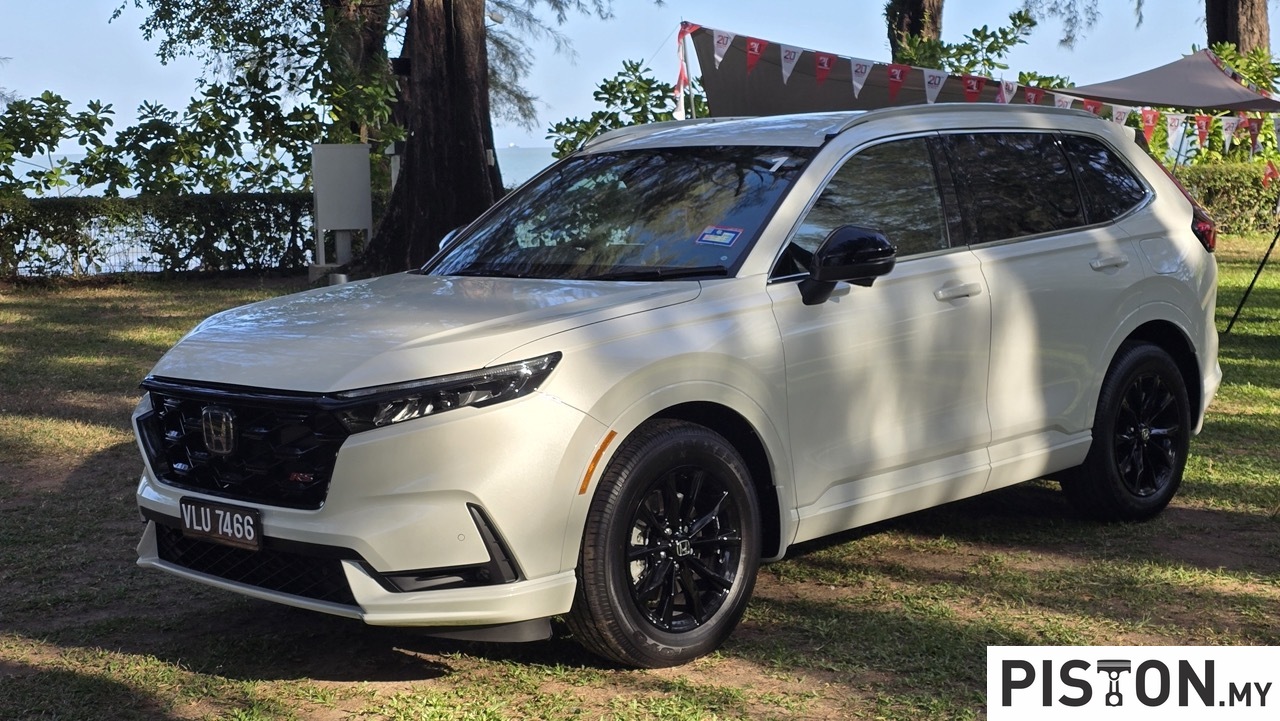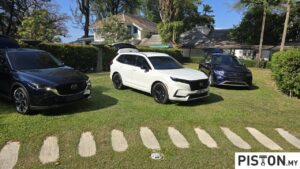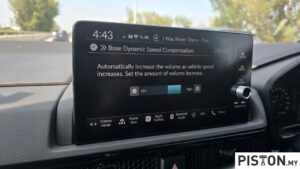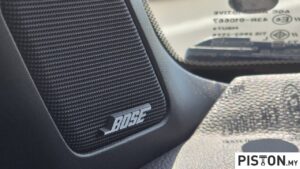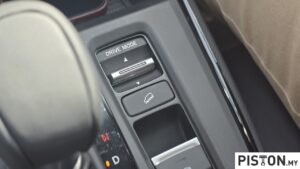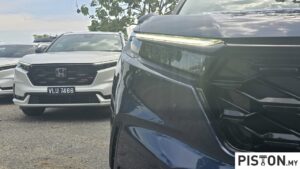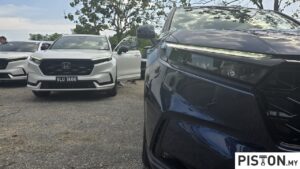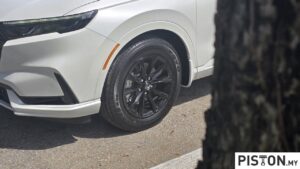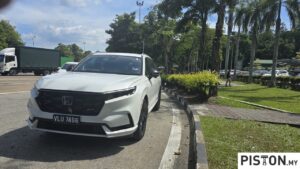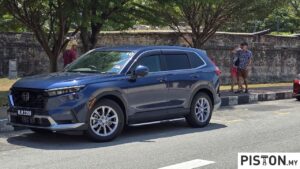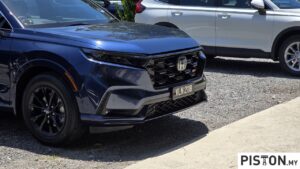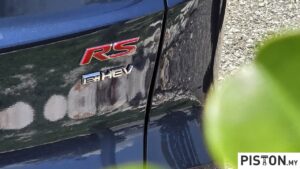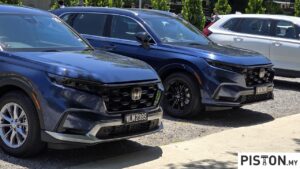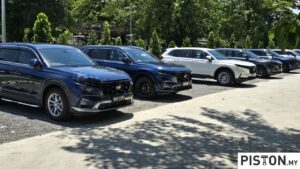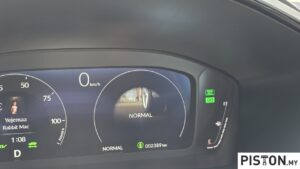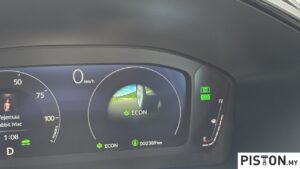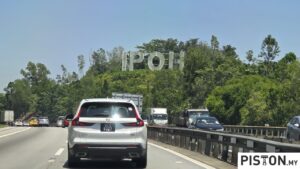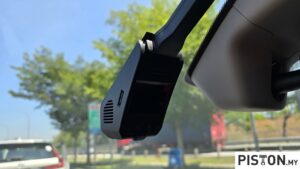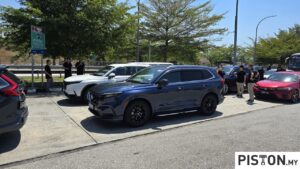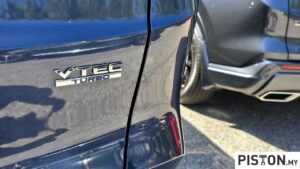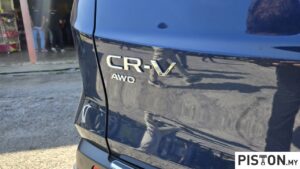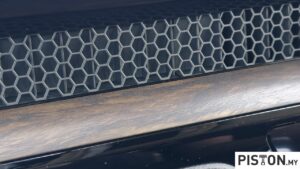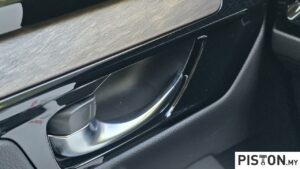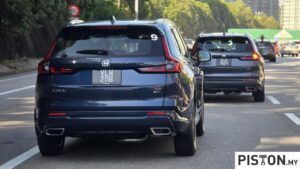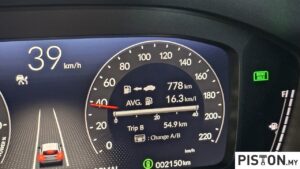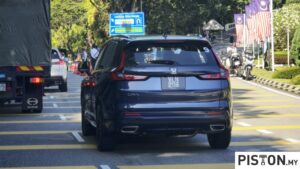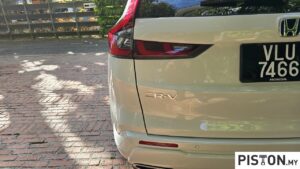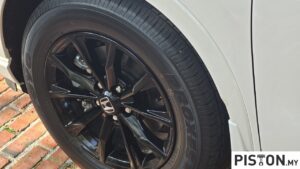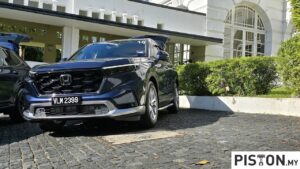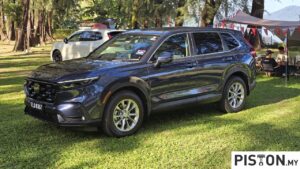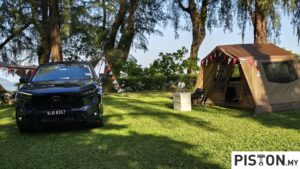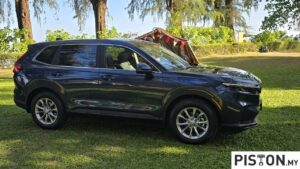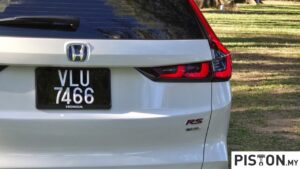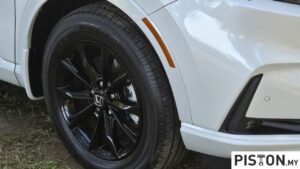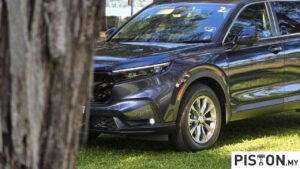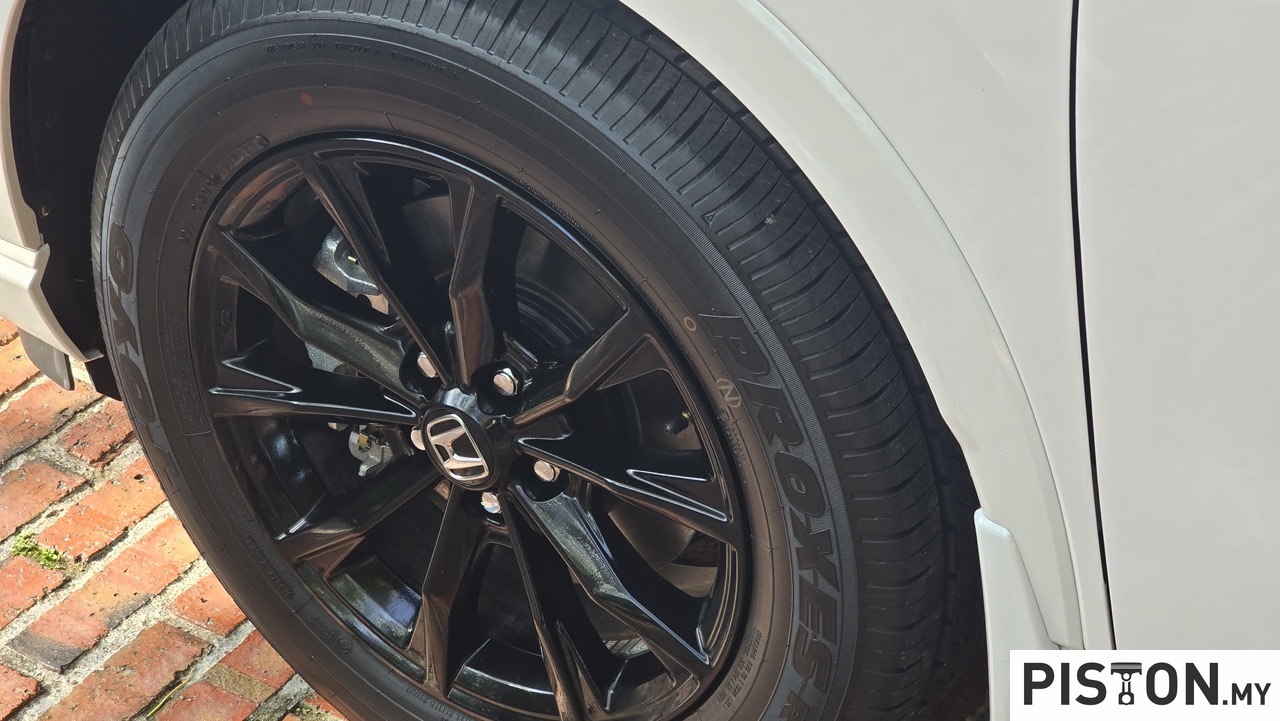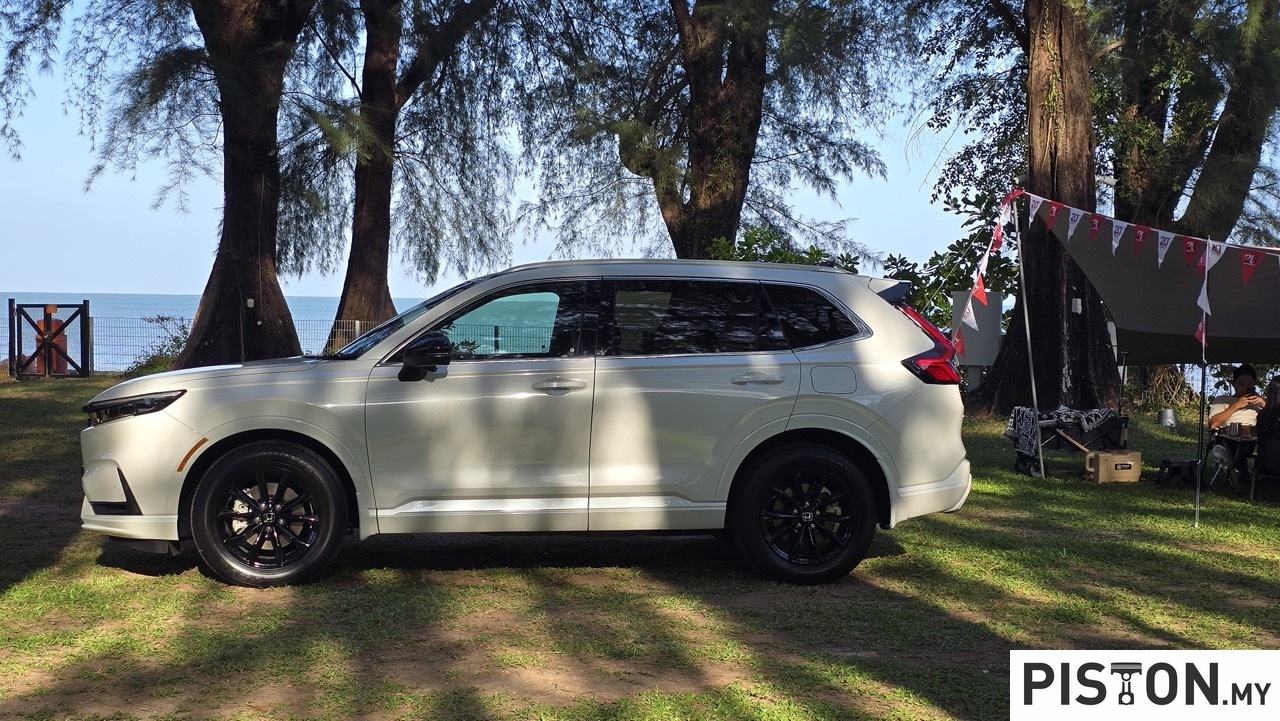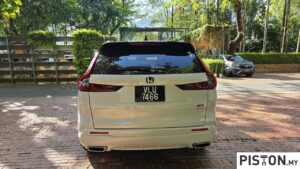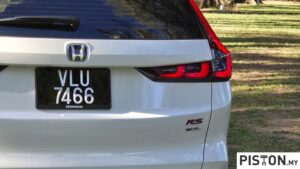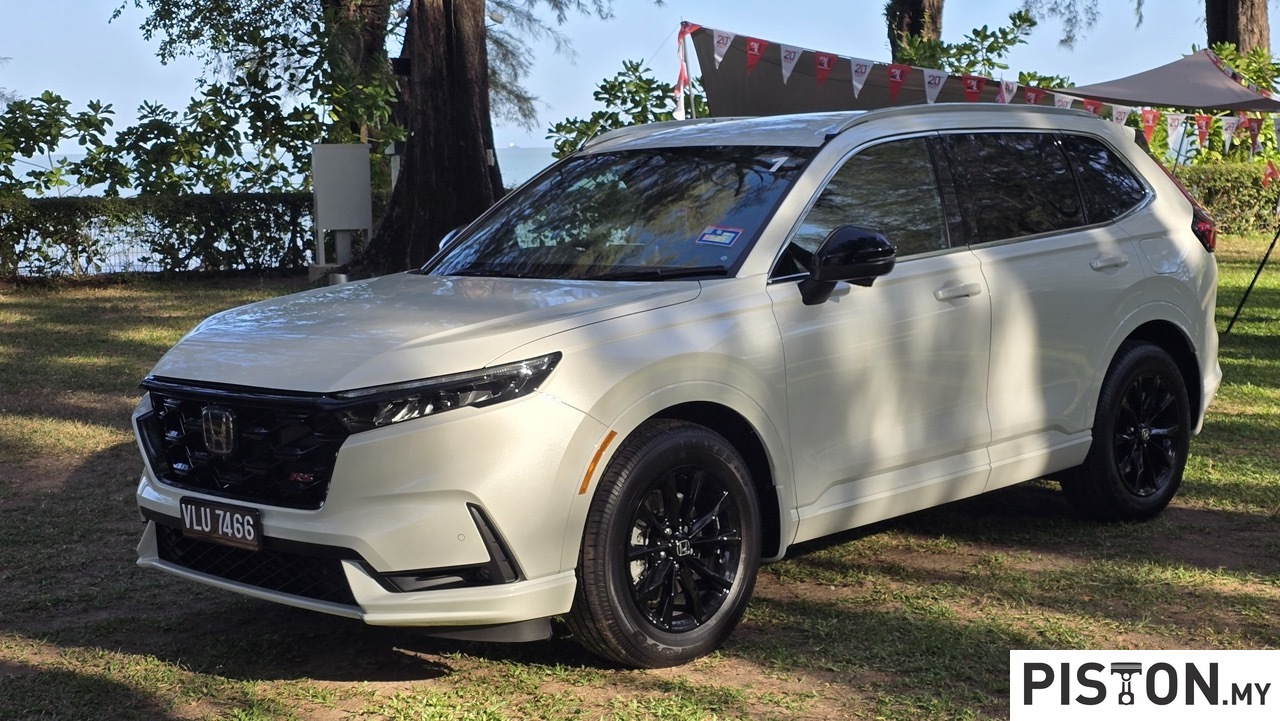Honda has been a prominent player in the SUV segment since 1995, which is when the first-generation CR-V was introduced. In 2002, the second generation debuted, 2007 the third, 2012 the fourth, 2017 the fifth and now, we have the sixth-generation CR-V.
We drove the sixth-generation CR-V in Thailand back in November 2023 before it was introduced here in Malaysia in December and were immediately blown away by its refinement and features.

In Malaysia, the CR-V comes in four variants, the S, E, V and the top of the line e:HEV RS. It truly stands out in the C-segment of SUVs, rivalling models like the Volkswagen Tiguan and Mazda CX-5.
During a recent test drive to Penang, we got to drive the V variant and the e:HEV RS variant. The V variant, priced at RM181,900, features a 1.5 litre turbocharged inline-four petrol with direct injection that produces 193PS and 243Nm of torque.

The e:HEV RS on the other hand is priced at RM195,900, and features a 2.0 litre naturally-aspirated Atkinson-cycle inline-four petrol with direct injection that has an output of 148PS and 190Nm of torque. Why is it so low? Well, because it has an electric motor which has an output of 184PS and 335Nm of torque. No, this is not a combined output. The engine simply acts as a generator that charges up the battery which sends power to the front-mounted electric motor. Through a lock-up clutch, the engine can drive the front wheels directly at higher speeds whenever it is more efficient to do so. So, efficiency is what the e:HEV model does best.
Visually, we find the CR-V to be stunning, especially with the new Canyon River Blue Metallic colour option. The hybrid variant even has an active grille shutter, which has been around since 2017 on models like the Odyssey. But the most eye-catching feature are the taillights. Yes, some might say it looks similar to the Volvo and so on, but that’s a debate for another day. On the CR-V however, it’s a nice finish to the ‘elegant’, yet sporty look.
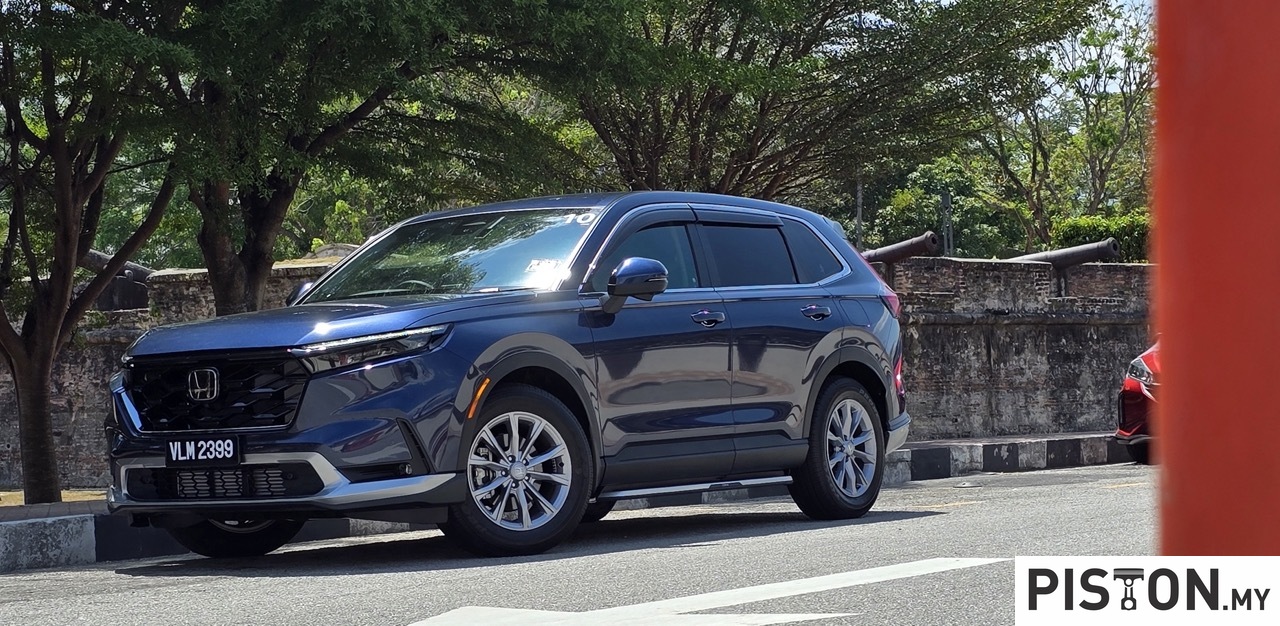
The standard rims look good, especially the black trim ones that are found on the e:HEV RS. So there is no need to do a rim change. Even if you wanted to, especially for the hybrid variant, you would be making a huge mistake. The hybrid variant comes with wheel resonators which we have actually talked about previously. To simplify it, the resonators assist with noise reduction in the cabin, suppressing annoying road noises, especially on long drives.
Speaking of long drives, we drove the V variant from Kuala Lumpur to Penang and the hybrid variant from Penang back home. Immediately we noticed what a prominent role those resonators play. The road noise that we were hearing in the cabin from the V spec was very obvious but tolerable and in the hybrid variant, that noise was noticeably suppressed. So, kudos to Honda for taking these into consideration.

We asked Honda Malaysia why the resonators were not fitted into the lower variants and Honda stated “The resonators were designed specifically for the hybrid variant for higher noise, vibration, and harshness (NVH) performance, which is why the other variants do not have it.”
On the topic of noise in the cabin, the V spec has a screaming CVT gearbox that may annoy you, especially once you reach higher engine speeds. To some, that may not be an issue, or maybe it’s just us..

However, there is one feature that the V spec has on the inside that we wish the e:HEV had; the wood trim that can be found on the dashboard and door panels.
The e:HEV comes with a silver metallic film trim that is not too bad but lacks the elegant finish that the V spec has. Maybe Honda was going with a more sporty feel that is portrayed by the ‘RS’ trim which features red stitching on the inside.

The term ‘sporty’ is not only applied to the looks of the e:HEV RS, but also to the whole driving experience. There are three driving modes to choose from, which consists of Econ, Normal and Sport mode. It basically enhances the throttle feel and response, and in Sports mode, it is more eager to respond to any demand.
Besides that, the e:HEV RS also does not have a gearbox per say besides for a simpler box for reverse and forward drives. It just does not have ratios in the traditional sense. Honda calls this an e-CVT, perhaps because it would be too complicated to explain to its customers how it works.

To add to the driving pleasure, Honda also included a neat little feature called Active Sound Control (ASC). What this does is that it provides amplified engine sounds and gear-shifting sounds piped back to the cabin through the audio system.
According to Honda, this sound was built from scratch and was not based on the sound created by any internal combustion engine. It was built around what many may consider “sporty” and we were not disappointed at all. It sounds believable and does not have an annoying droning sound like some cars do. So we enjoyed hitting the throttle, adhering to speed limits, of course.

This was a four-hour drive. So was it comfortable? Yes. We took turns driving and, bear in mind that we aren’t exactly the smallest of people, length and width. As mentioned earlier, Honda takes these small things into consideration because the CR-V features body-stabilising seats for front passengers.
The enhanced structure in the back of the seat increases lumbar and pelvic support to create a body-stabilising effect. This helps to prevent fatigue, particularly in the hip and waist area of occupants on longer journeys.

On the way back to KL, we did not do a driver swap so we only had one driver, which is this writer and I drove all the way without making any stops. Not even to empty my tank or fill up the car’s tank. So yes, I can confirm that it is most definitely comfortable.
We even tested the stability of both variants and how they handled the winding roads of Batu Ferringhi. With the hybrid variant, it was smooth and easy, had enough power to shoot out of corners and felt a little bit more stable. The V spec, however, had a more heavier feel on the steering wheel which did not make the turns feel as smooth. But both variants kept the front passengers in place because of the seats.

If you’re a family man with kids at the back, this will not matter because you aren’t supposed to be shooting out of corners anyway.
If you do have kids, the CR-V comes with rear ISOFIX child seat anchors and you will not have to worry about baggage space as it comes with 589-litre of boot space.

When it comes to prioritising the safety of both you and your family, the CR-V ensures peace of mind with an array of advanced safety features. These include eight airbags strategically positioned throughout the vehicle, encompassing front, side, side curtain, and knee protection.
Additionally, the CR-V is equipped with enhanced stability provided by the Vehicle Stability Assist (VSA) system, complemented by Anti-lock Braking System (ABS) with Electronic Brakeforce Distribution (EBD) and Brake Assist for optimal braking performance.

The Auto Brake Hold feature offers convenience in traffic, while Hill Start Assist and Hill Descent Control bolster confidence in challenging terrain. Agile Handle Assist (AHA) contributes to responsive handling, and the Emergency Stop Signal alerts surrounding vehicles in sudden braking situations.
Seat belt reminders for all seats ensure occupants’ restraint, while Auto Door Lock adds an extra layer of security. Active Noise Control fosters a serene cabin environment, while the Honda Connect telematics system keeps you connected on the go.
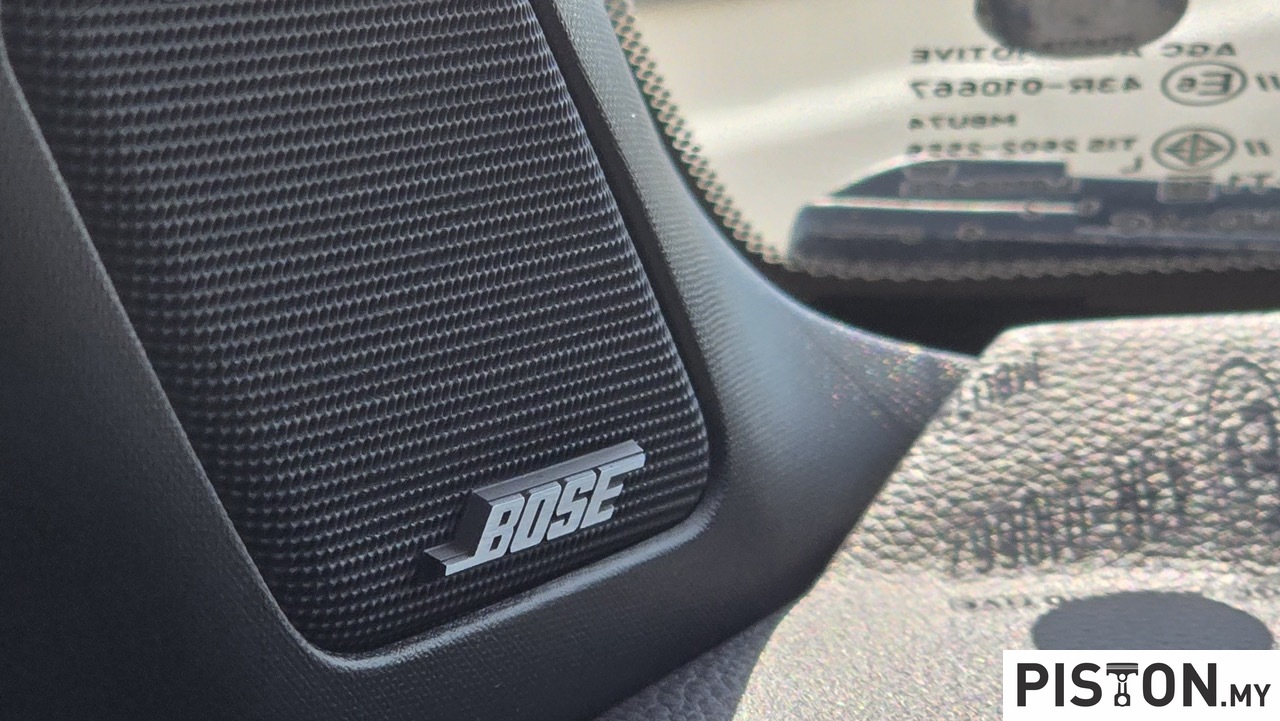
The Honda Sensing driver assistance suite encompasses advanced features such as Forward Collision Warning (FCW), Autonomous Emergency Braking (CMBS), Adaptive Cruise Control (ACC) with Low-Speed Follow (LSF), Road Departure Mitigation (RDM), Lane Departure Warning (LDW), Lane Keeping Assist (LKAS), and Automatic High Beams (AHD). Furthermore, the Lead Car Departure Notification feature enhances driving awareness, collectively ensuring a safer and more confident driving experience.
As for entertainment, the e:HEV RS features a 10.2-inch TFT fully digital instrument panel and a 12-speaker Bose Premium audio system which is the first time that Honda Malaysia is offering a premium sound system for its locally-assembled model.

However, there is one thing that we wish Honda would fix. The LaneWatch system. We get that it is helpful to watch out for vehicles nearby, but when you turn on the left indicator, the LaneWatch system just overrides the entire infotainment system which means, you won’t be able to see your GPS screen until you turn off the indicator. And this can be particularly annoying when you need to watch out for where to turn next.
Thankfully, we managed to drive this SUV around Penang without bumping into anything or anyone. We say this because the new body, compared to the previous generation, has an 80mm increase in length, 10mm in width, and a 40mm greater wheelbase. The enormity of the new CRV is hard to describe, but as soon as you see it, you will realise how big it is.

Despite being bigger and heavier, which we thought might result in higher fuel consumption, we saw the opposite of that. After fuelling up in Penang, we had a total range of 778km in the hybrid variant. Upon arrival in KL, we had a total of 280km left. The V spec does not lack in this department too as we did not have to fuel up on the way to Penang.
Overall, the CR-V presents itself as the ultimate SUV for the price, excelling in comfort, space, and driving experience. It is no surprise then that Honda Malaysia has already sold over 6000 units in just three months.

Specifications:
1.5 V AWD:
Engine: 1.5 litre DOHC VTEC Turbo engine
Power: 193PS @ 6000rpm
Torque: 243Nm from 1,700 to 5,000rpm
Gearbox: CVT
0-100km/h: 10.4 seconds
Top speed: 200km/h
Price: RM181,900
2.0 e:HEV RS:
Engine: 2.0-litre, 4-cylinder, DOHC
Power: 184PS @ 5,000rpm
Torque: 335Nm @ 2000rpm
Gearbox: e-CVT
0-100km/h: 9.0 seconds
Top speed: 187km/h
Price: RM195,900
We like: Comfort, space and augmented sound
We don’t like: LaneWatch and its slow wireless charging










